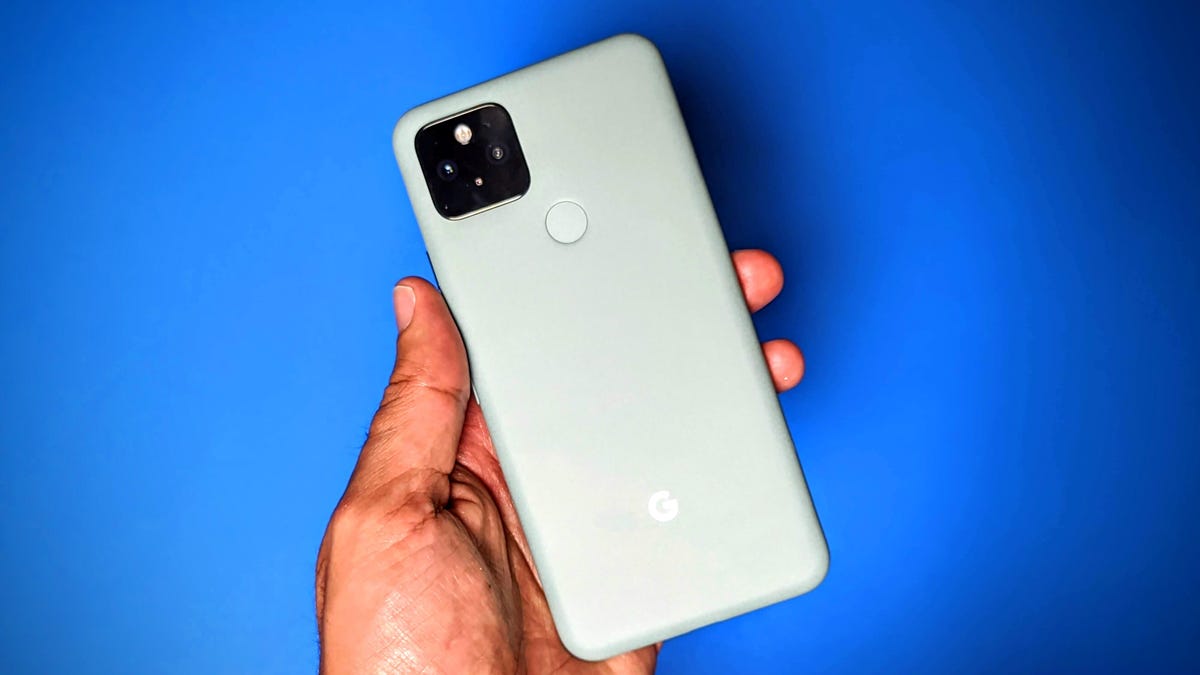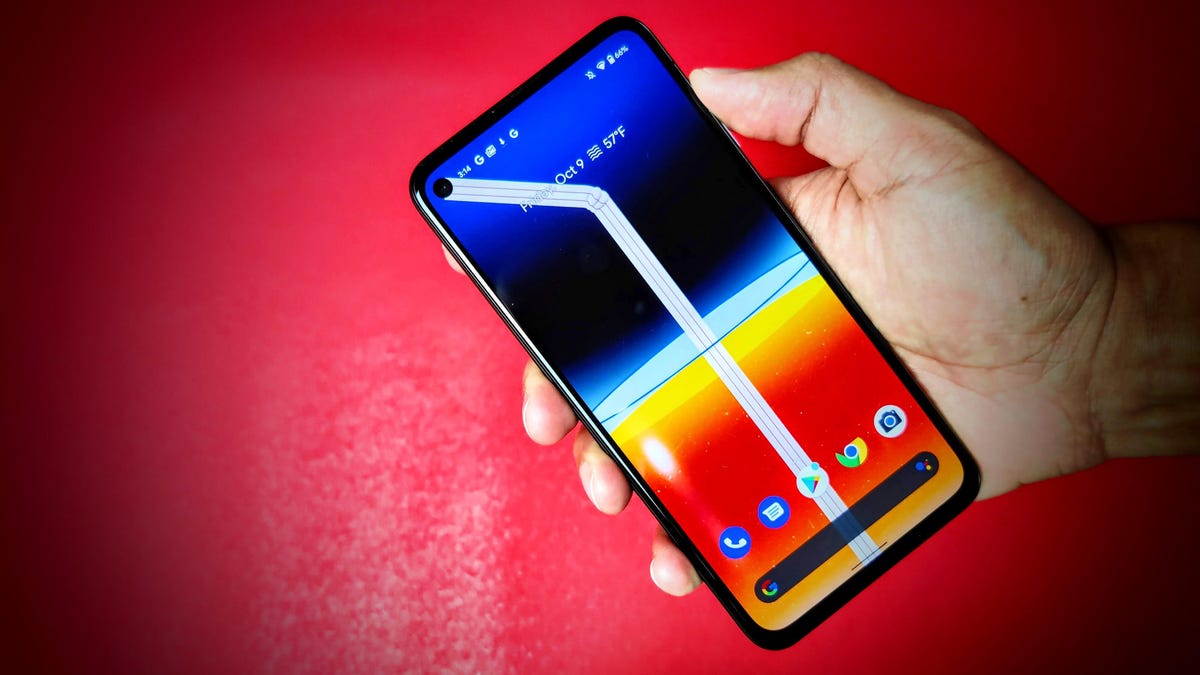Google’s Pixel 7 and Pixel 7 Pro phones are now available, and both introduce a number of new features that could be appealing to current Pixel phone owners who are wondering if it’s time to upgrade. Both the $599 (£599, AU$999) Pixel 7 and $899 (£849, AU$1,299) Pixel 7 Pro include the Tensor G2 chip, which is the second-edition of Google’s in-house processor, alongside software improvements like Photo Unblur for resurrecting out-of-focus pictures and call tools like the upcoming Clear Calling that filters out background noise.
Watch this:
Pixel 7 Pro Review: Google’s Best Phone Gets Better
10:14
However, a big benefit for earlier Pixel owners is that Google offers at least three years of software and security updates, and certain older models even include unlimited cloud storage for pictures using Google Photos’ Storage Saver quality. That last benefit isn’t offered on the Pixel 7 and 7 Pro and gives anyone with an older Pixel a lot to consider before upgrading.
To help you decide, we compare what the Pixel 7 and 7 Pro are packing to each previous Pixel phone generation while taking into consideration any remaining perks that could be lost from upgrading.
![]()
Google’s latest flagship phones are now available to buy. The Pixel 7 starts at $599. Get up to $750 off with trade-in and $200 in Google Store credit.
Read our Pixel 7 first take.
![]()
Google’s top-of-the-range Pixel 7 Pro costs $899. Get up to $750 off with trade-in and $200 in Google Store credit.
Read our Pixel 7 Pro review.
Pixel 7 and 7 Pro vs. Pixel 6A, 6, 6 Pro
The Pixel 7 and 7 Pro have a slightly upgraded design, the new Tensor G2 processor and camera improvements. A free VPN service will eventually come to the Pixel 7 and 7 Pro, too. Both phones run Android 13 and also support face unlock. But if you already have a Pixel 6, it’s too soon to upgrade.
The Pixel 7’s upgrades are appreciated but incremental. Unless you can get a new Pixel for free through a trade-in program, the differences aren’t drastic enough to justify spending money for a year-over-year upgrade.
The Pixel 6 family runs on the first-generation Tensor processor, which is still fast enough for most everyday tasks. Google also issued software updates to fix certain bugs some users experienced with the fingerprint sensor and screen earlier this year.
The 7 and 7 Pro’s screen sizes are almost exactly the same as on last year’s devices, except the Pixel 7’s 6.3-inch display is slightly smaller than the 6.4-inch one on the Pixel 6. Both the Pixel 7 Pro and 6 Pro have 6.7-inch screens.
The new phones also have very similar camera systems to last year’s Pixel 6 and 6 Pro. The Pixel 7 and 7 Pro both have a 50-megapixel main camera and 12-megapixel ultra wide camera, similar to the Pixel 6 and 6 Pro. The high-end Pixel 7 Pro, like last year’s 6 Pro, also has a 48-megapixel telephoto camera.
![]()
The Pixel 6 and Pixel 6 Pro.
Andrew Lanxon/CNET
The biggest camera change you get with the Pixel 7 Pro is an improved zoom that is longer and has better image quality. Google made some behind-the-scenes improvements to the way the image sensor crops the scene when zooming. The Pixel 7 Pro also fuses data from the main and telephoto lenses when zooming between 2.5x and 5x for better clarity.
Both phones get a longer digital zoom range of 8x for the regular Pixel 7 and 30x for the 7 Pro that let you frame your subject tighter. Compare that to the 7x and 20x magnifications for the Pixel 6 and 6 Pro respectively.
Both new phones also have a tool called Photo Unblur for sharpening older photos, even pictures taken with other phones and cameras. Photo Unblur is exclusive to the Pixel 7 and 7 Pro since it requires the new G2 processor and builds off the Pixel 6 and 6 Pro’s Face Unblur tool.
The Pixel 7 Pro also has a new macro photography mode for taking closeup shots, and both new Pixels have a cinematic video mode that blurs the background much like Portrait mode for photos.
![]()
Google’s Pixel 6A costs $449.
Lisa Eadicicco/CNET
These are commendable improvements, but they aren’t significant enough to justify an upgrade. That’s especially true since Google upgrades older phones with new features over time. The Pixel 6 and 6 Pro, for example, will get new features such as Clear Calling, Guided Frame (the feature that provides auditory and haptic cues to help those who are blind or low vision take selfies) and the ability to transcribe audio messages.
The Pixel 7 and 7 Pro each have larger screens and superior cameras compared to the 6.1-inch Pixel 6A, which has a 12.2-megapixel main camera and 12-megapixel ultrawide sensor. But the Pixel 6A just launched in July at $449, meaning if you purchased one it’s still likely in great condition. Unless you really need a sharper camera and a larger screen, it’s definitely worth holding onto the Pixel 6A for another year.
The bottom line: Don’t upgrade yet if you have a Pixel 6, 6A or 6 Pro. These phones are still fairly new and have plenty to offer.

The Google Pixel 5.
Juan Garzon/CNET
Pixel 7 and 7 Pro vs. Pixel 5 and 5A
There’s a lot that’s different between the Pixel 5 generation and the Pixel 7 lineup. Google’s new Pixel phones have larger screens, bigger batteries, more advanced cameras, Google’s Tensor G2 processor and a new glass and aluminum design. Whether those changes justify an upgrade, however, depends on your phone’s condition and what matters to you most in a smartphone.
The Pixel 5 falls into a sort of middle ground that makes the question of whether it’s time to upgrade a difficult one to answer. The Pixel 7’s changes are dramatic enough to make a noticeable difference, particularly when it comes to the design and camera. But the Pixel 5 is also new enough to feel fast and relevant for at least another year or two.
As is typically the case with today’s new smartphones, the Pixel 7’s biggest upgrades can be found in the camera. The Pixel 7 and 7 Pro each have a higher-resolution 50-megapixel main sensor compared to the 12.2-megapixel main sensors found on the Pixel 5 and 5A. But what might be more significant are the new camera modes and tools powered by Google’s Tensor processor, which you can’t get on the Pixel 5 and 5A since those phones run on Qualcomm processors.
The Pixel 7 and 7 Pro have features like Magic Eraser, which lets you remove unwanted objects from the background of a photo, Face Unblur or keeping faces crisp even when the subject of a photo is moving and Real Tone, which portrays different skin tones and complexions more equitably.
![]()
The Google Pixel 5A.
Sarah Tew/CNET
If you’re upgrading from the standard 6.1-inch Pixel 5, you’ll also get a larger screen whether you choose the 6.3-inch Pixel 7 or 6.7-inch Pixel 7 Pro. The Pixel 5A, however, is the same size as the Pixel 7.
There are several other smaller changes that come together to make the Pixel 7 generation feel new and different. The Pixel 7 and 7 Pro have a refreshed design with more durable Gorilla Glass Victus back panels and metal camera bars stretching across the device. Overall the 7 and 7 Pro feel more premium than the Pixel 5 and 5A. The new phones also have an in-screen fingerprint reader compared to the rear-mounted one on the Pixel 5.
But the best time to upgrade is when you feel like you need it. If your Pixel 5 or 5A is in good condition, you won’t miss out on anything critical by holding onto your device for a while longer. Google supports the Pixel 5 with new Android software versions and security updates until at least October 2023, while the Pixel 5A will get the same support through August 2024. The Pixel 5 is also the last Pixel phone to get unlimited cloud storage for pictures at the Storage Saver quality, but the Pixel 5A does not have this benefit.
The bottom line: If your Pixel 5 or 5A is still working well, you can hold onto it for another year. But there’s also enough that’s new with the Pixel 7 lineup to justify an upgrade if you’re in the market for a new phone.
![]()
Google’s Pixel 4.
Andrew Lanxon/CNET
Pixel 7 and Pixel 7 Pro vs. Pixel 4A, 4A with 5G, 4 and 4 XL
The Pixel 7 and Pixel 7 Pro arrive just as the Pixel 4 and 4 XL hit the end of their guaranteed software and security update timeline. The 4 and 4 XL’s update to Android 13 will be the final major software update planned for the phones. And there’s no guarantee that Google will continue to provide security updates to either device, which could mean that the phones become vulnerable to exploits as time goes on.
That’s not all bad, as you do get Android 13 features like the Material You interface, the redesigned music player, improved continuity such as copying and pasting content between devices and additional security features like automatically deleting your phone’s clipboard history. The Pixel 4 and 4 XL also both retain Google’s unlimited cloud storage for photos and videos benefit, as long as that media is uploaded in Storage Saver quality.
Note that Pixel 4A and 4A with 5G owners will continue to get updates until August 2023 and November 2023, respectively, so there’s still plenty of time and support left for both.
On the hardware side, moving to the Pixel 7 or 7 Pro is a leap. The most noticeable trade-up will be with the phone’s camera, in which you’ll move up from the Pixel 4’s 12.2-megapixel main camera and 16-megapixel telephoto to the 50-megapixel main camera and 12-megapixel ultrawide camera that’s available on both the Pixel 7 and 7 Pro. If you step up to the 7 Pro, you also get a 48-megapixel telephoto camera. This comparison is largely the same for the Pixel 4A and 4A 5G, since both have the same main 12.2-megapixel camera as the 4 and 4 XL.

Google’s Pixel 4A with 5G.
Juan Garzon/CNET
Upgrading from the Pixel 4 series — which run on the Qualcomm Snapdragon 855 processor — to Pixel 7 series’ Tensor G2 chip brings a wealth of AI-powered photography enhancements like Photo Unblur and Real Tone. The Pixel 4A and 4A 5G with their less powerful Snapdragon 730G and 765G chips, respectively, also pale in comparison to the new Tensor G2 chip.
Other than losing the photo storage benefit, upgrading from the 4 and 4 XL also means you say goodbye to the phones’ Motion Sense features. At the time, the 4 and 4 XL touted a sensor chip named Soli, which allowed for facial recognition similar to Apple’s Face ID along with other gestures meant for controlling the phone. The features proved unpopular though, and largely disappeared from later Pixel phones. The Pixel 7 does introduce Face Unlock, but it’s not as secure as Apple’s Face ID nor what was previously used on the Pixel 4 series.
The bottom line: If you have the Pixel 4 and 4 XL, the end of software and security updates means it’s a great time to upgrade to the Pixel 7 or 7 Pro. You’ll see big improvements to the phone’s power, camera performance and software. If you aren’t ready to give up Pixel 4 exclusives like Motion Sense or the unlimited cloud storage, hold onto your phone a bit longer.
If you have the Pixel 4A or 4A 5G, you have roughly a year left of software and security updates for each phone, which should give plenty of time to wind down your time with this phone. If you choose to upgrade to the 7, 7 Pro or even the Tensor-equipped $449 Pixel 6A, you’ll see a lot of noticeable improvements to the phone experience.
![]()
Google’s Pixel 3 and 3 XL.
Angela Lang/CNET
Pixel 7 and Pixel 7 Pro vs. Pixel 3A and earlier
If you are still holding onto the Pixel 3A or earlier, it’s definitely time to move up to a newer Pixel phone if you can. The Pixel 3 and 3 XL’s software and security updates ended in 2021, and the Pixel 3A and 3A XL each received their final update in September, according to 9to5Google. All four of the Pixel 3 phones can run Android 12, but won’t be receiving Android 13. While the phones do retain the benefit of unlimited cloud storage for photos and videos uploaded at Storage Saver quality, the phones could become vulnerable to exploits or similar issues.
If you don’t want to spend $599 or up for the Pixel 7, remember that you can consider the $449 Pixel 6A, which includes many of the best software features seen on the Pixel 6 and Pixel 7. You might also be able to catch the Pixel 6 and Pixel 6 Pro on sale, now that both phones are replaced by the Pixel 7 series.
![]()
The original Google Pixel and Pixel XL.
Josh Miller/CNET
One interesting note for those still holding onto the original Google Pixel and Pixel XL from 2016: Those two phones are the only Pixel phones to retain unlimited cloud storage for photos and videos in Original quality. As a result, you might want to continue holding onto the phone as either a dedicated camera or — if you are particularly patient and passionate about making the most of this perk — consider using the Pixel as a way to upload media from other devices. A proposed method using a number of different file transfer apps was posted on Reddit, which appears to serve the purpose of transferring photos over to the Pixel for uploading. CNET hasn’t verified nor endorses the method — again, the phone no longer receives security updates. But if you have the phone on hand and it still turns on, it could be a fun experiment for occasional use.
The bottom line: The Pixel 3 series will no longer receive software or security updates, making the phones a potential liability moving forward. While the phones are running Android 12 and will continue to otherwise function, it’s best to move onto a newer phone as soon as you can.
Source by www.cnet.com

























